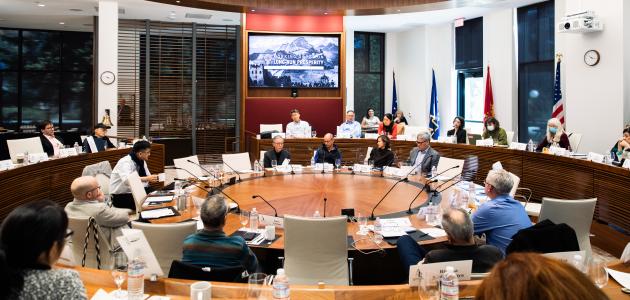The past decade has seen some of the most exciting moments in the history of the Estonian people, marking the emergence of a new political and socioeconomic order and the rebirth of a nation. In the updated second edition of Estonia and the Estonians (Hoover Institution Press, 2001), Toivo U. Raun traces the history of Estonia from the first signs of human habitation to the present day. In doing so, he both analyzes recent events and places them within a crucial historical perspective.
An entirely new chapter, added for the updated edition, traces the country’s post-communist transition in the 1990s. The new edition also includes additions to the chapters on the late 1980s and early 1990s, to provide up-to-date information on the era of glasnost’ and perestroika (1985–1991), when Gorbachev’s blessing for a frank and open discussion of Soviet shortcomings and the need for far-reaching reform led to a striking process of rebirth, renewal, and de-Sovietization.
“The movement for change in Estonia can best be characterized as a profound and broadly based desire for the restoration of Estonian political, cultural, and economic self-determination,” Raun writes. “In Estonia, glasnost’ opened the way for the rebirth of grass-roots organizations and a revival of the self-help tradition dating back to the independence era and the national awakening of the 1860s and 1870s.”
Raun also stresses the role of Estonia’s strategic geopolitical location and the small number of ethnic Estonians as crucial factors that have shaped the history of the area and its inhabitants. Since prehistoric times Estonia has been a crossroads of northeastern Europe where the major powers of the region have struggled for influence.
“The consciousness of being a small people has significantly affected Estonian thinking. Although there is evidence of an aggressive Estonian naval policy in the twelfth century, the historical era witnessed an end to political and military activism. By the time historical conditions fostered the emergence of a modern Estonian nation, it had long since been surrounded by much larger and more powerful neighbors.”
Estonia and the Estonians offers a balanced survey covering political history, the economy, social and demographic movements, and cultural life. Attention is also paid to historiography and to differing interpretations of major issues; throughout the book the history of Estonia is viewed in the larger context of northern and eastern Europe.
About the Author
Toivo U. Raun was born in Tartu, Estonia, and received his Ph.D. from Princeton University. He is a professor of Central Eurasian Studies and adjunct professor of History at Indiana University, Bloomington, and past president of the Association for the Advancement of Baltic Studies.
The Hoover Institution, founded at Stanford University in 1919 by Herbert Hoover, who went on to become the 31st president of the United States, is an interdisciplinary research center for advanced study on domestic public policy and international affairs.













